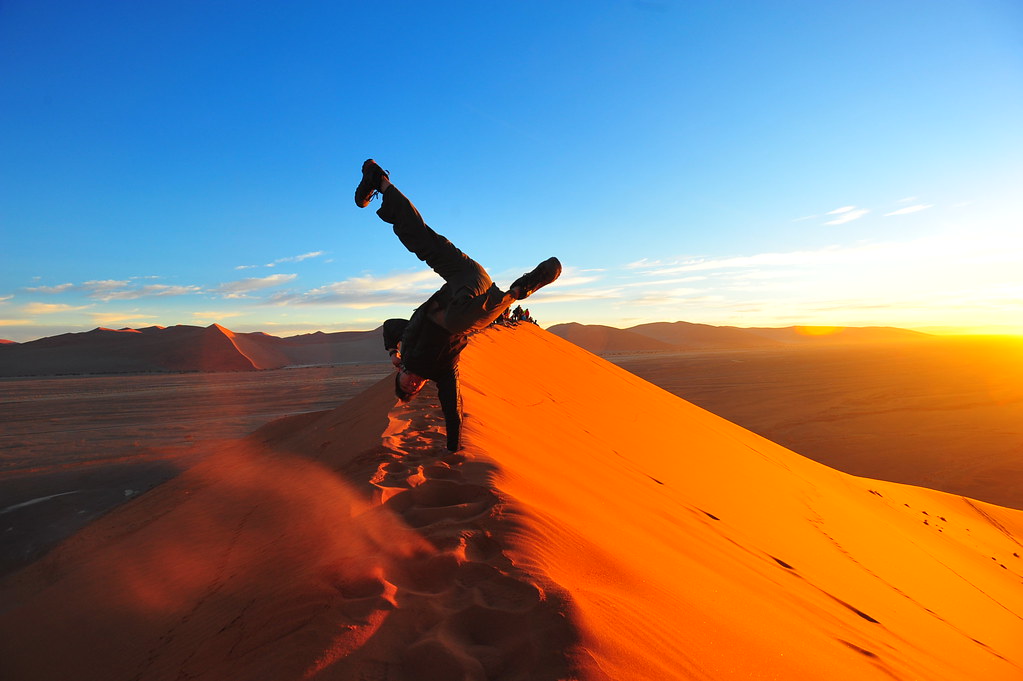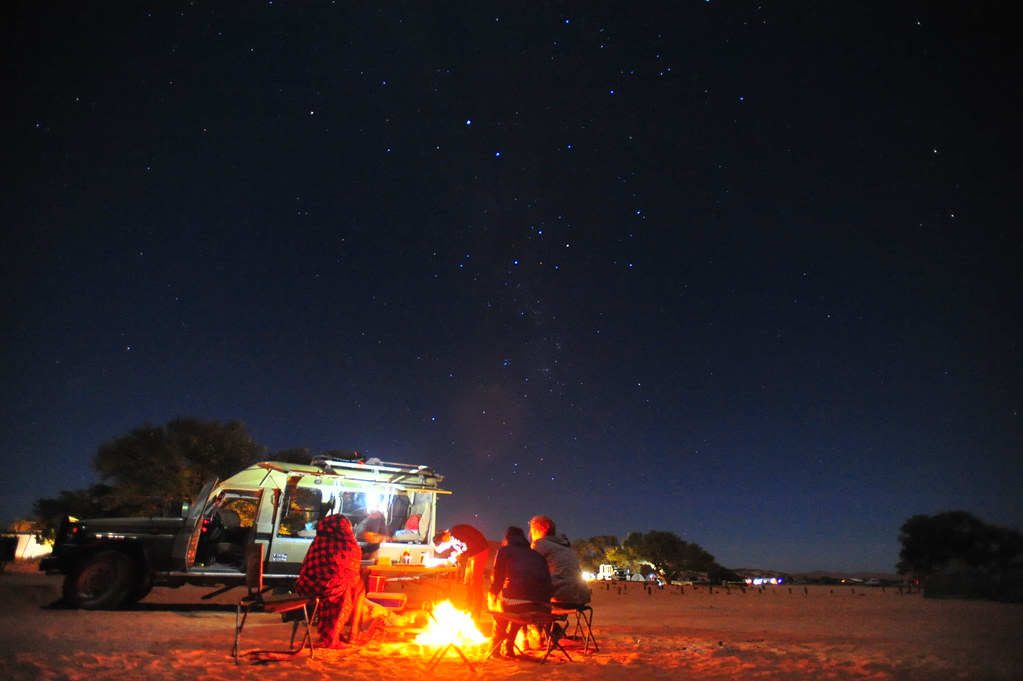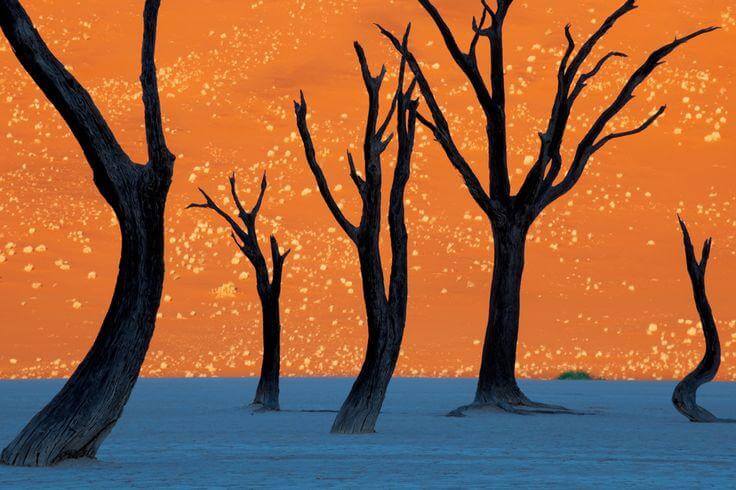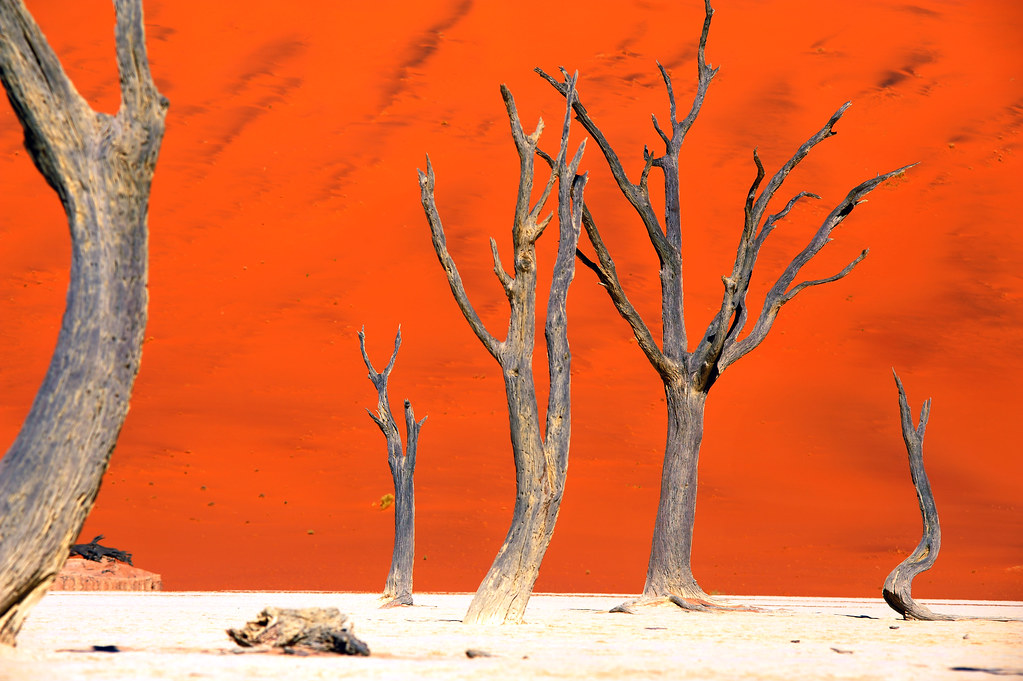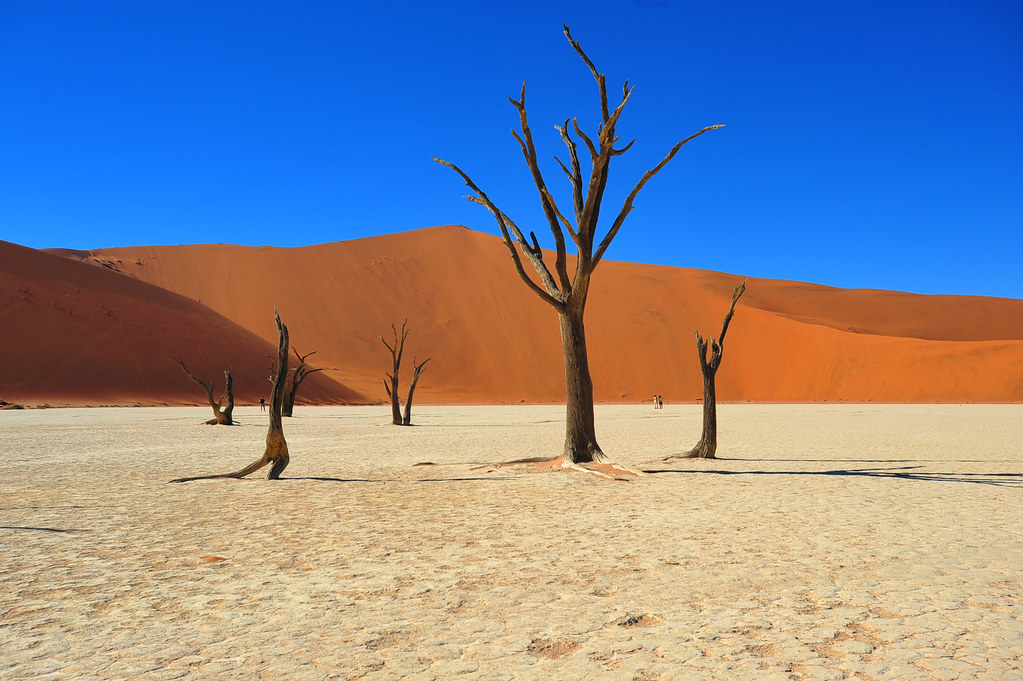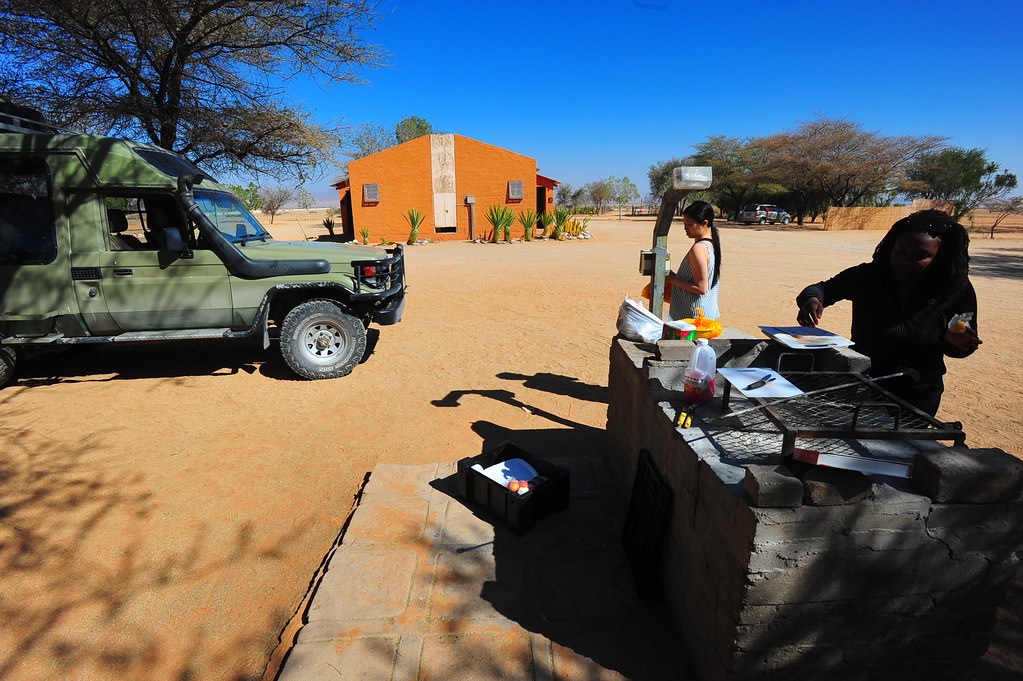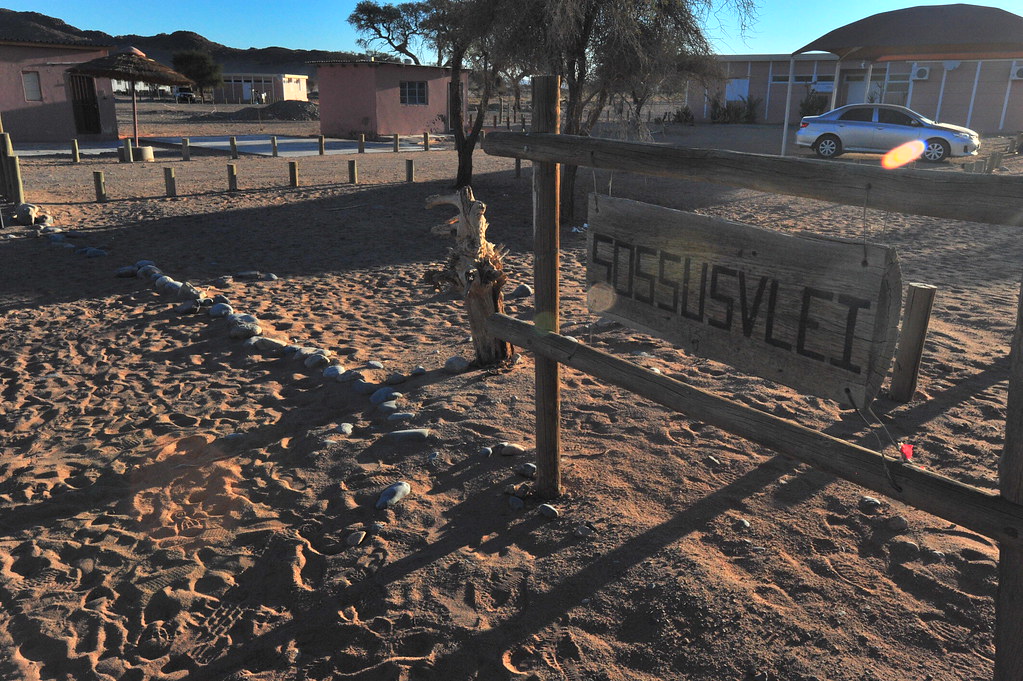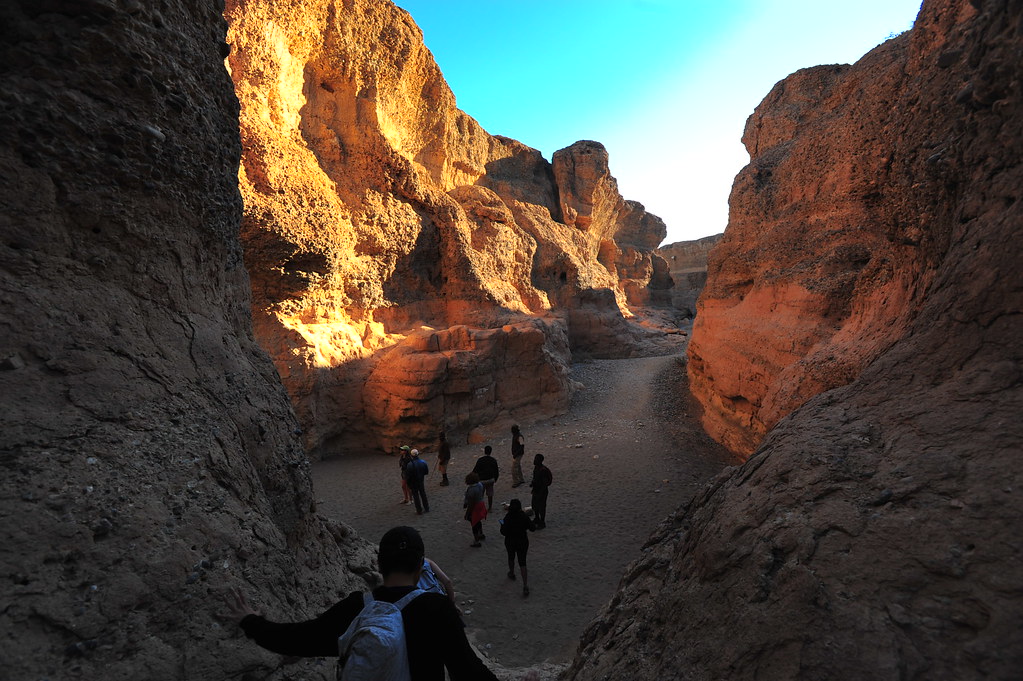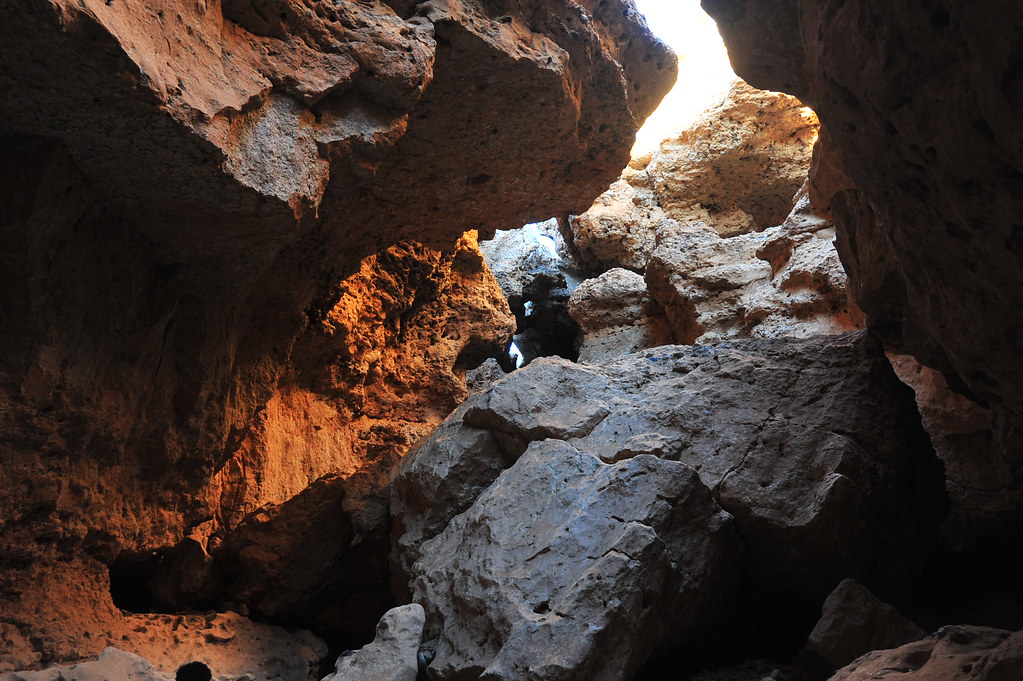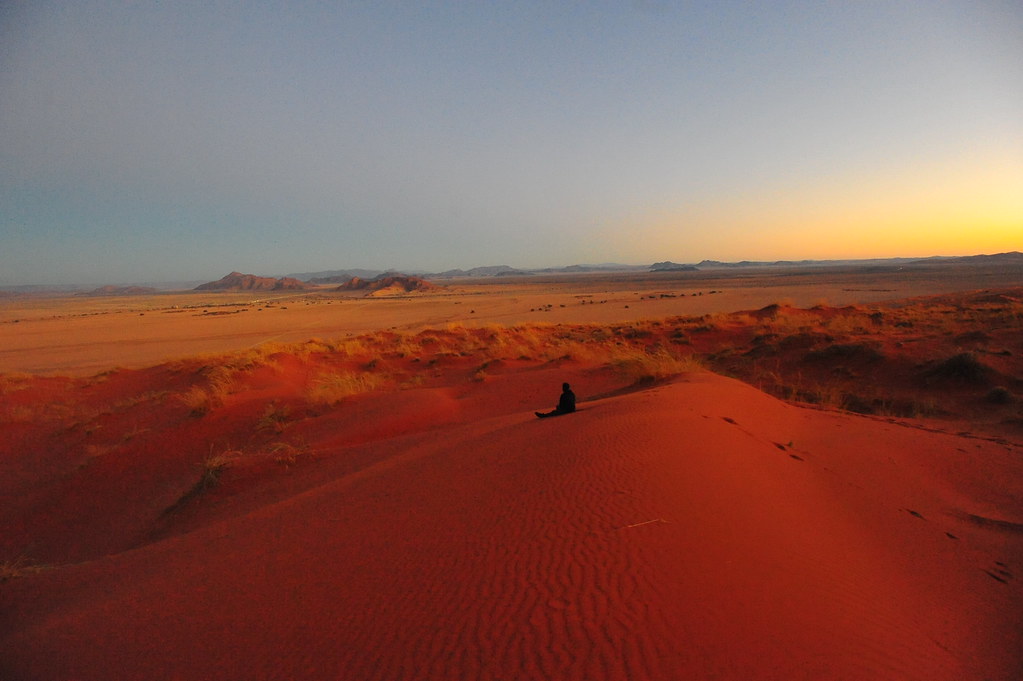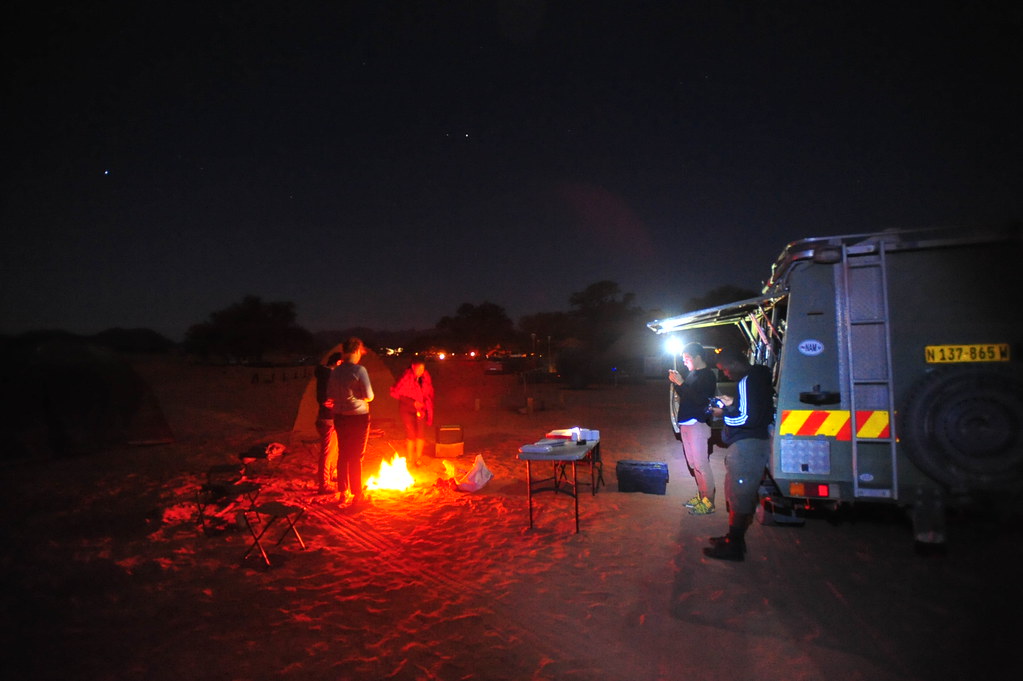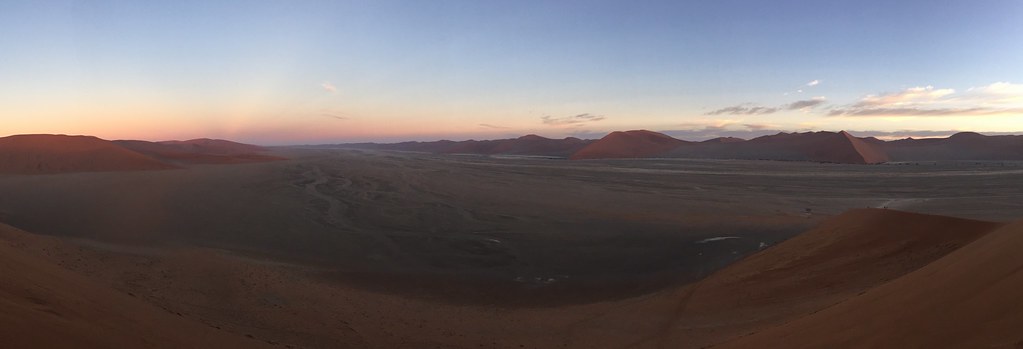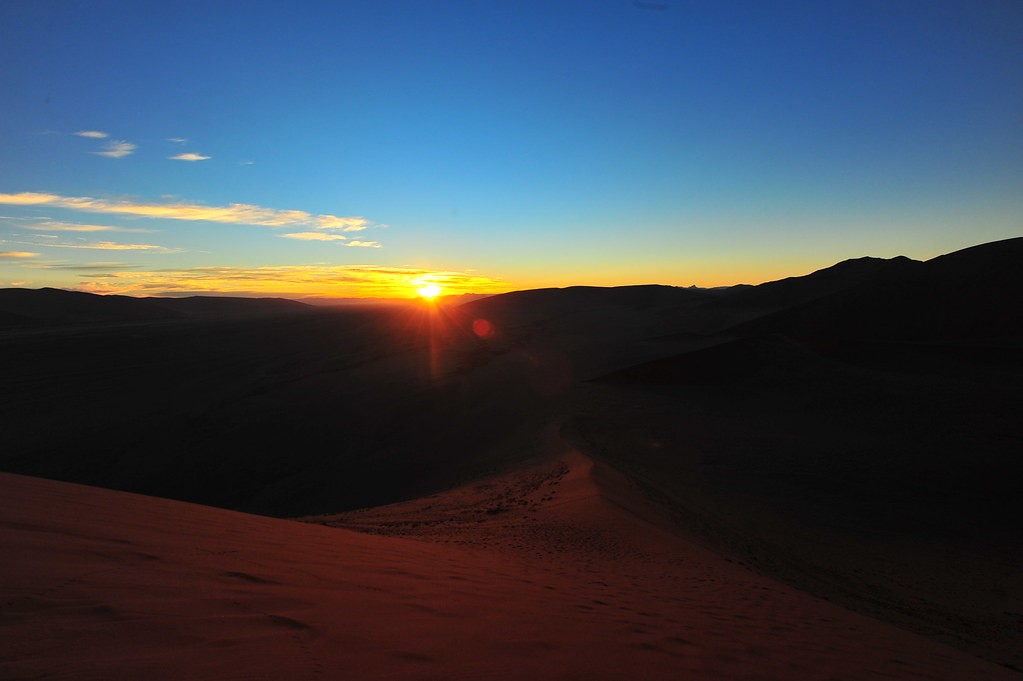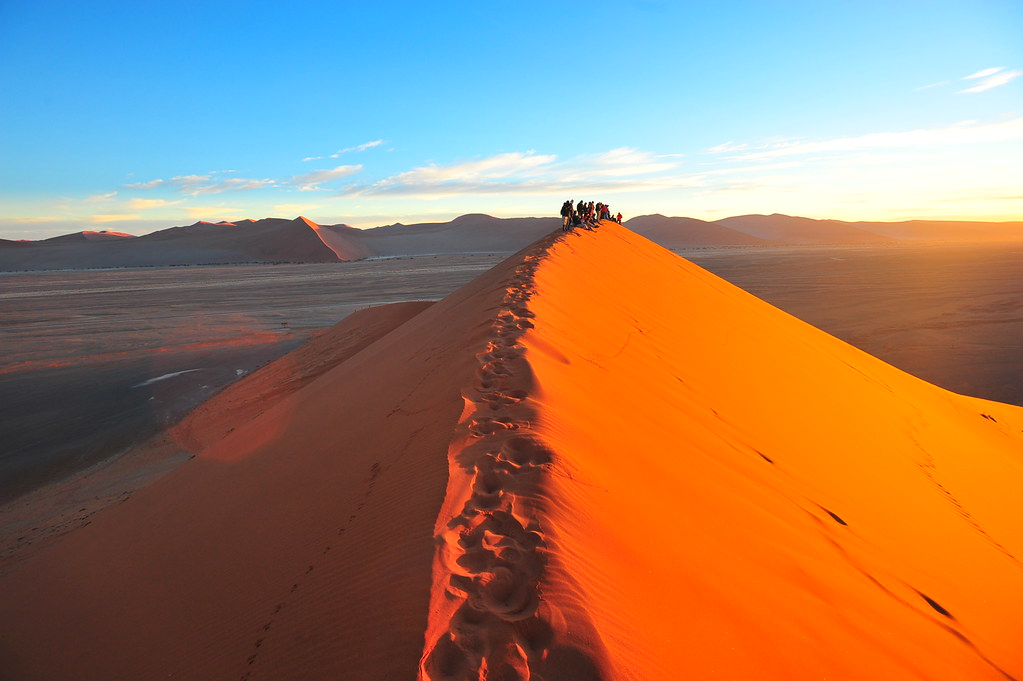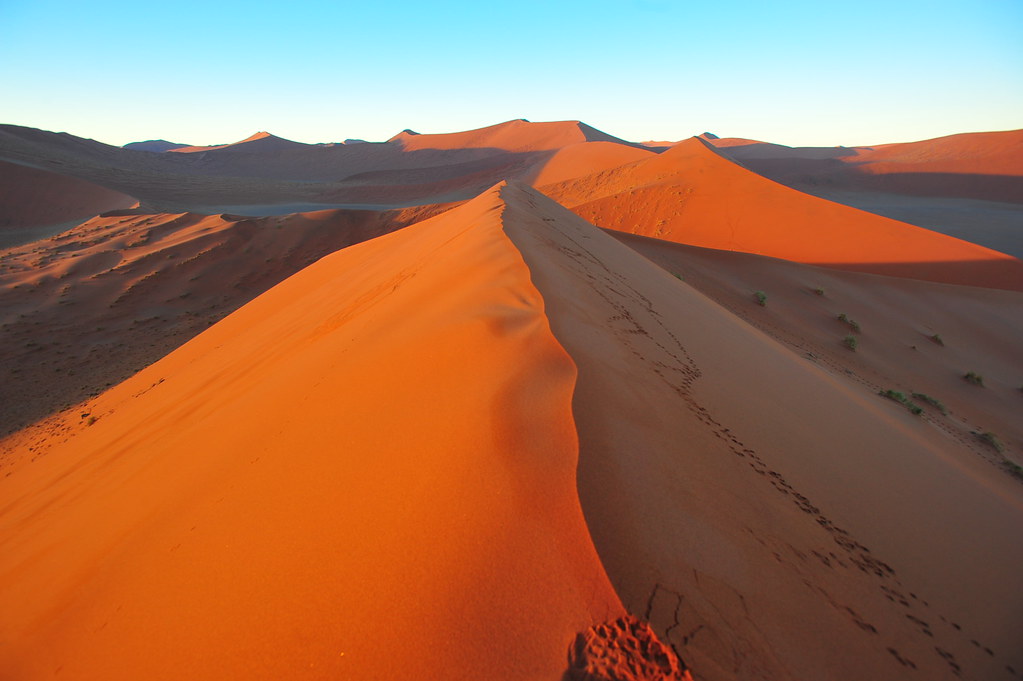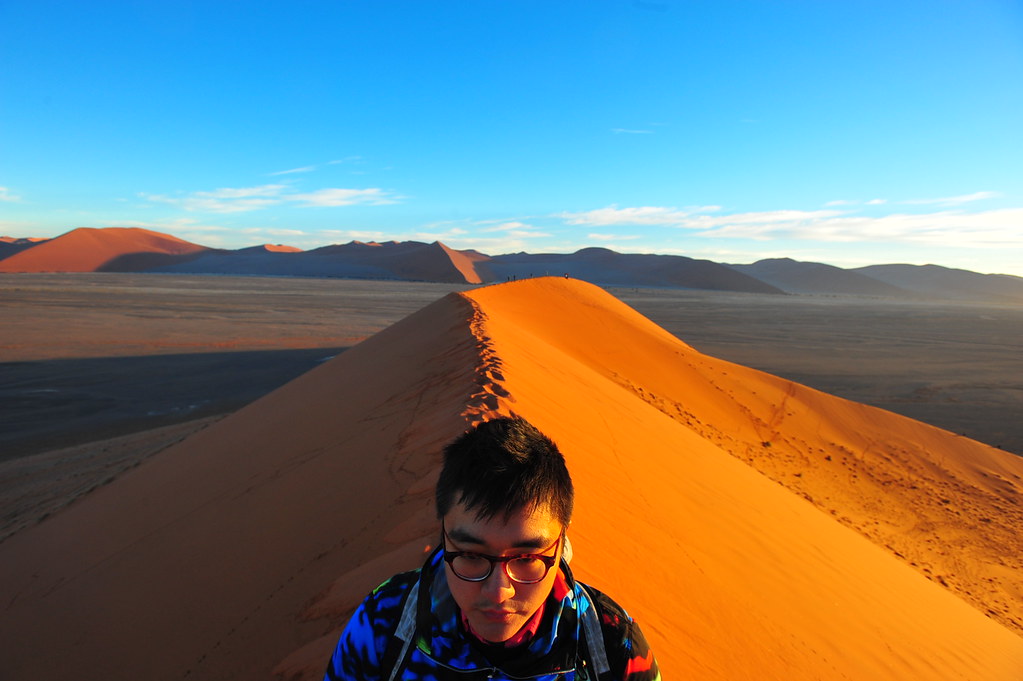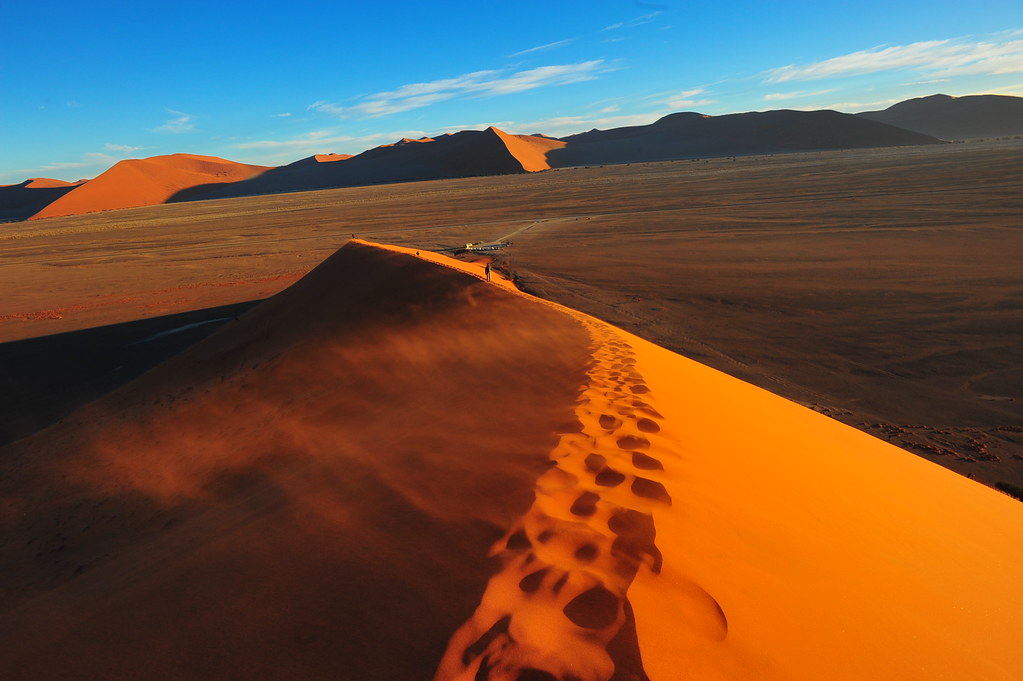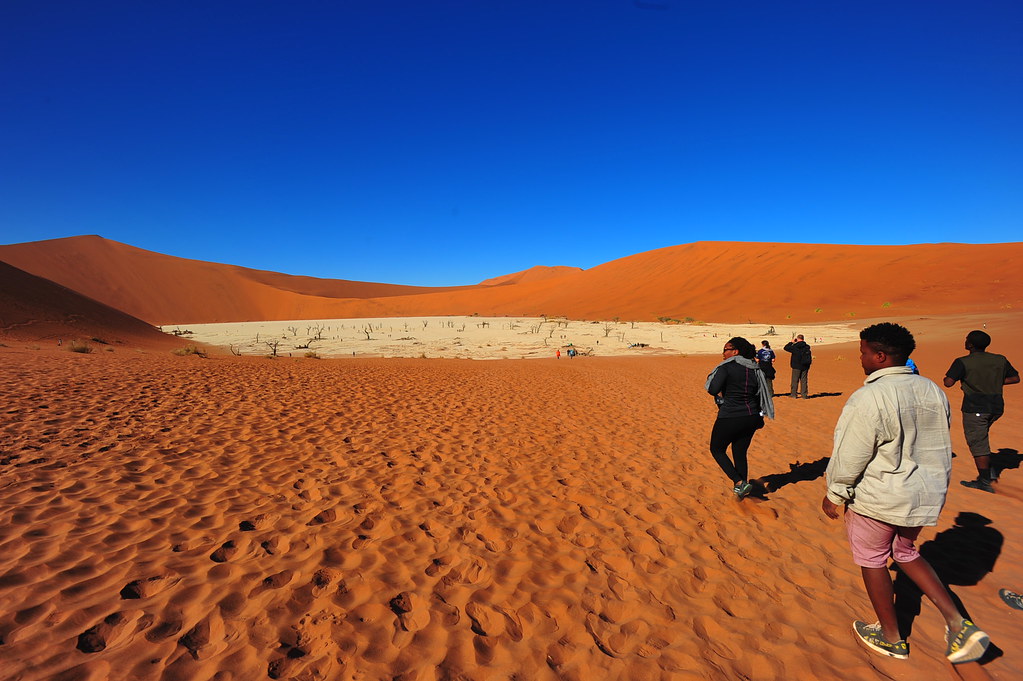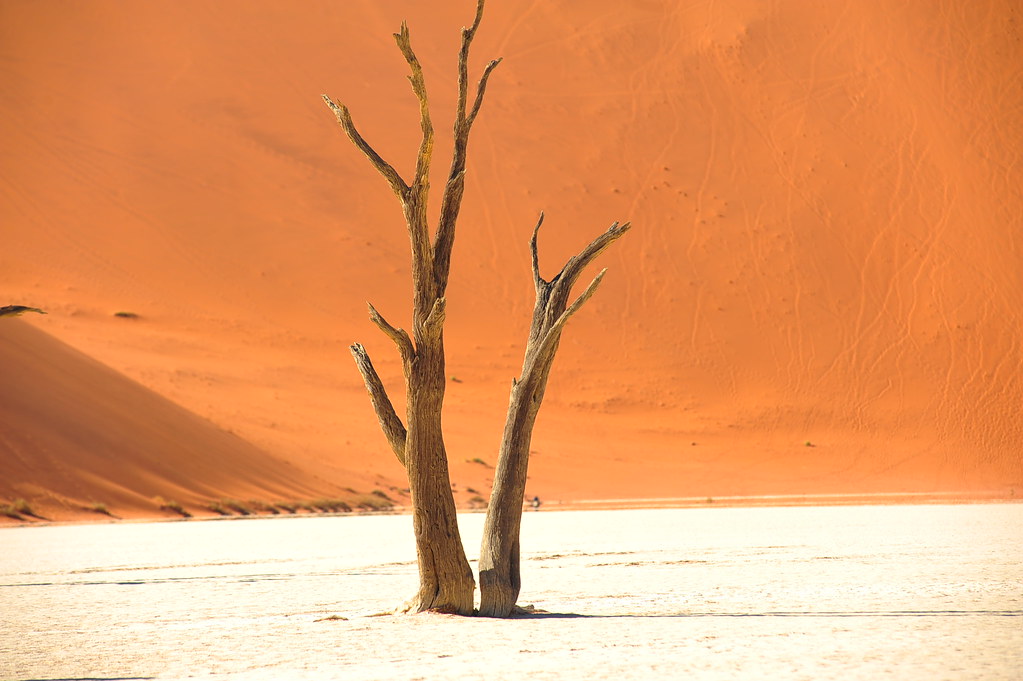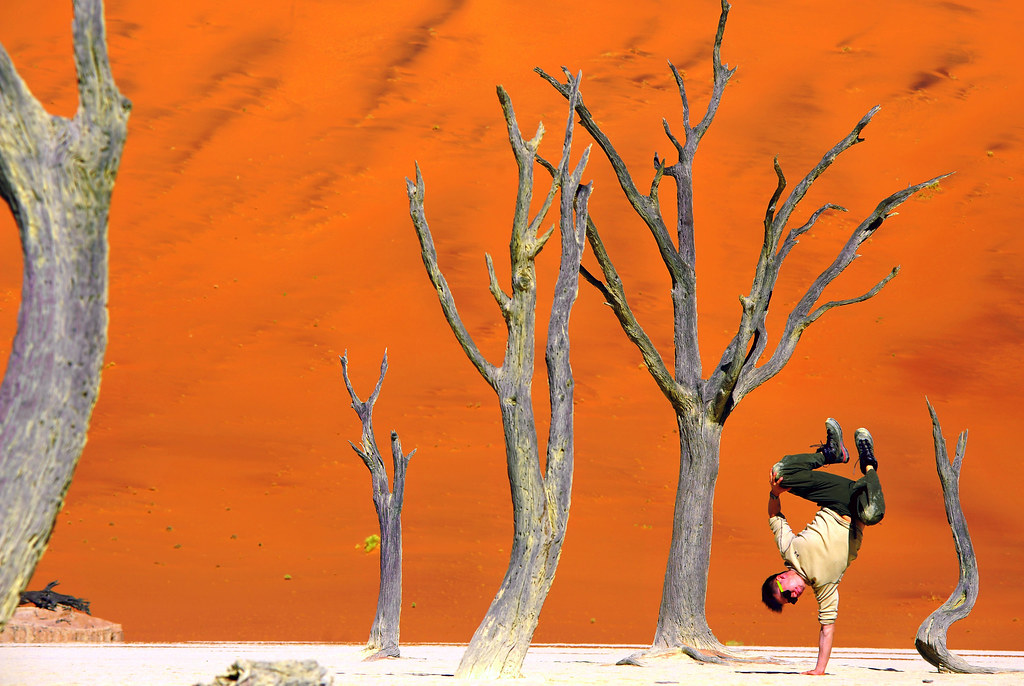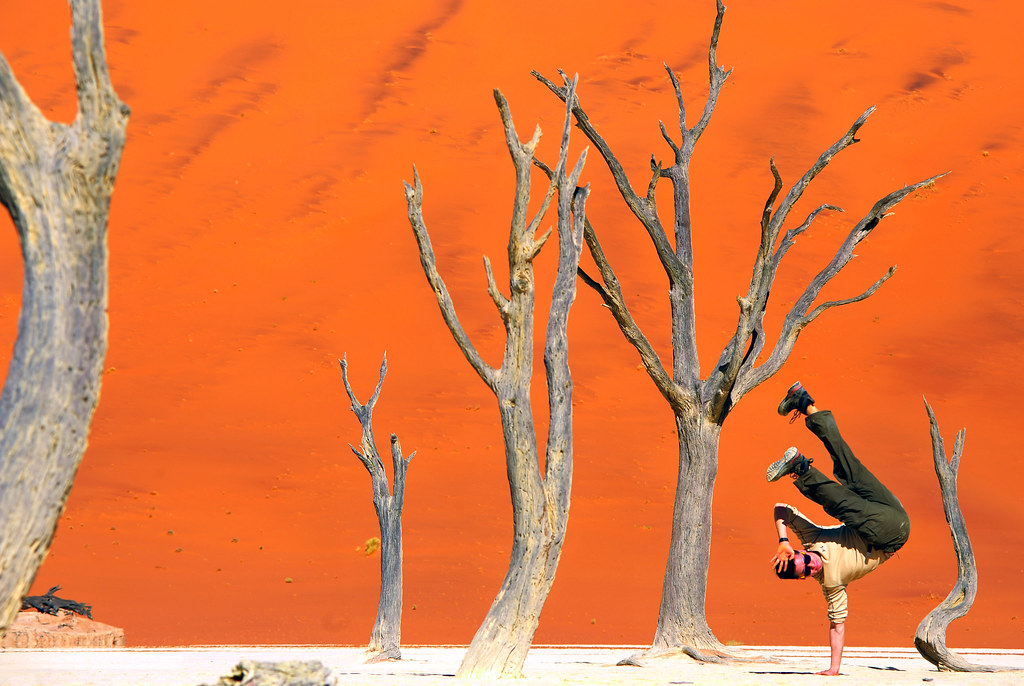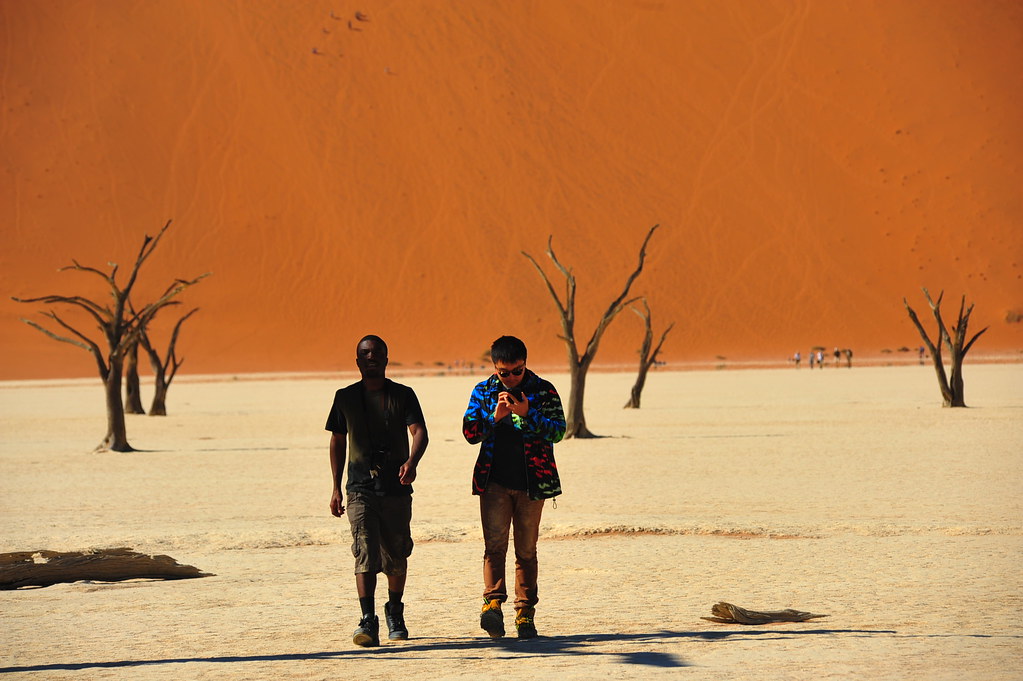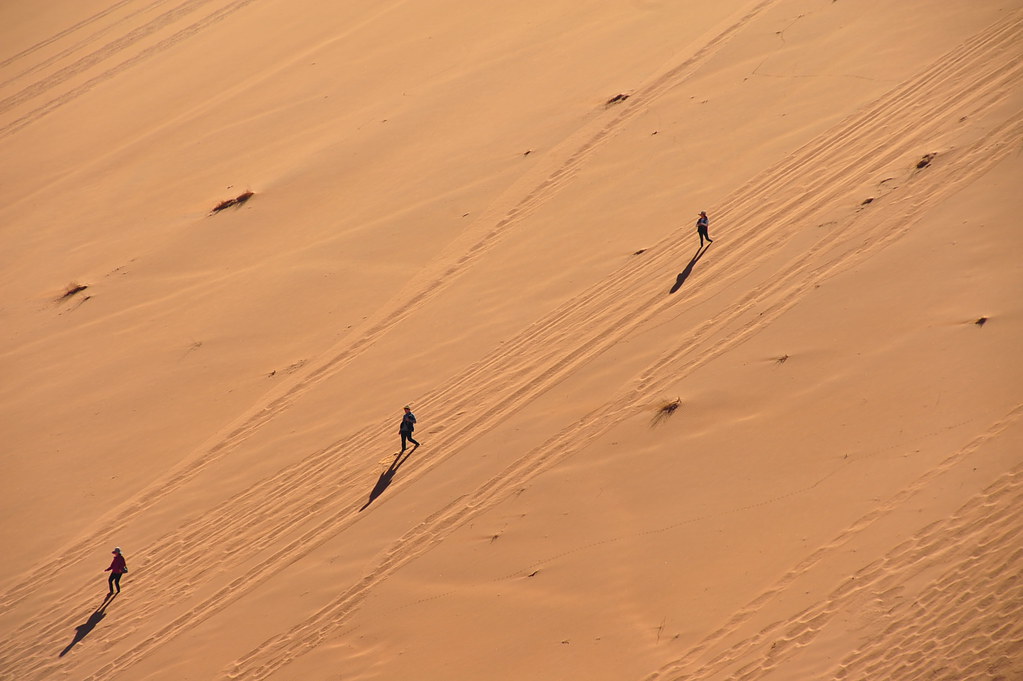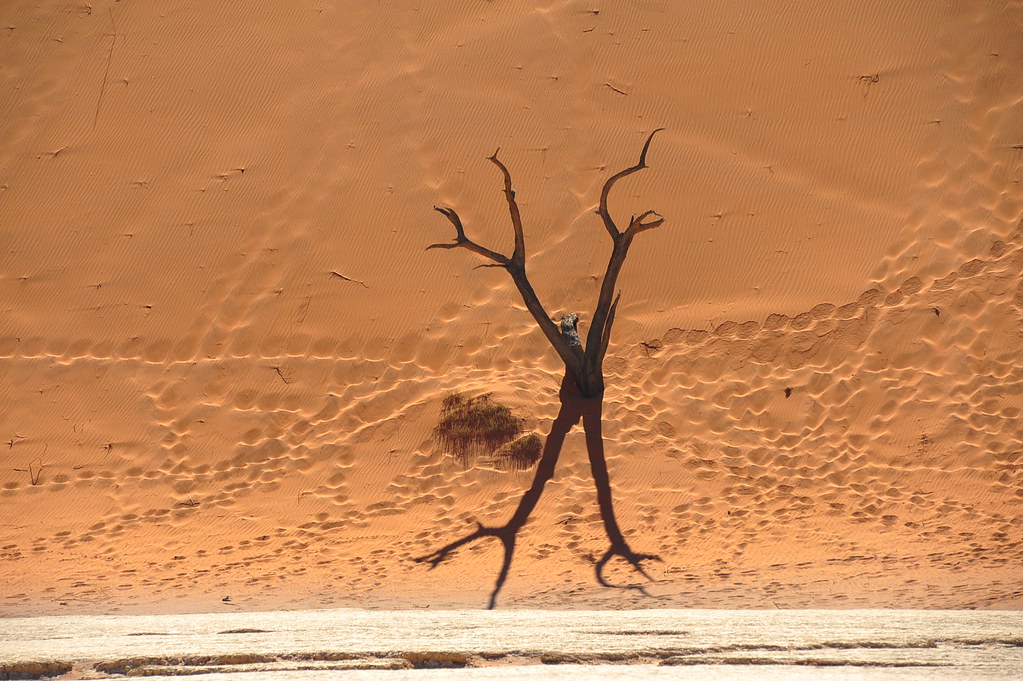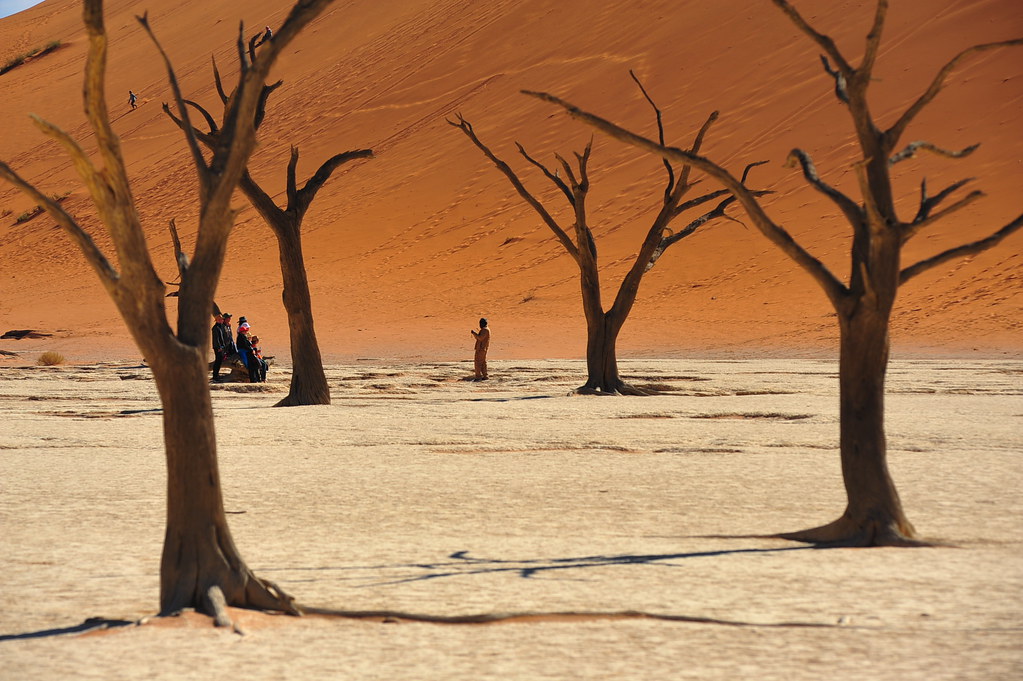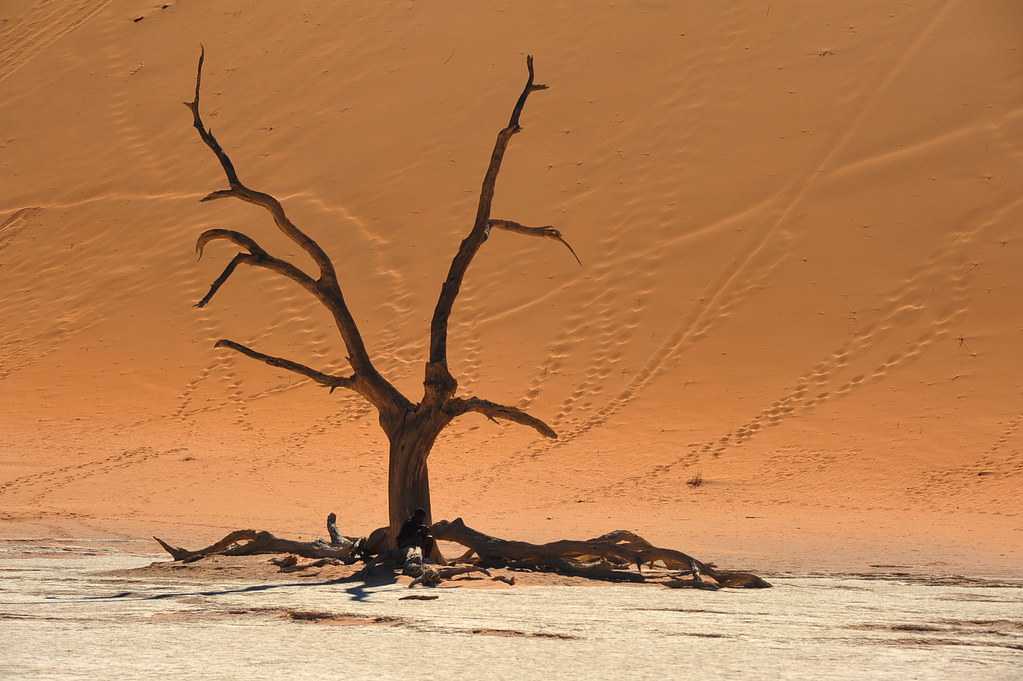Vemödalen – “The frustration of photographing something amazing when thousands of identical photos already exist.”
National Geographic, Frans Lanting, 2011:
The Monsoon Diaries, Calvin Sun, 2016:
Vermödalen, and yet I persist.
2 days in the world’s oldest desert will compel you to put a few things into perspective, namely that of one’s own occhiolism when arriving at such a place, but also what little you can do to appropriately let it all in.
And yet we persist.
At 8am in Windhoek the 7 of us set off in our 4WD tank led by our guide Sydney (of Travel Bug Safaris and The Cardboard Box Hostel), south across the Namibian desert towards Sesriem.
We stopped numerous times along the 6 hour drive to buy supplies, answer our bladders’ call to nature, stretch our legs, take photos, and have lunch at a remote outpost appropriately named Solitaire.
A beautiful ride that felt shorter than expected thanks to numerous engaging conversations, music, and occasional cat naps, by 3pm we had reached Sossusvlei.
Our first sight by Sossuvlei was a 45 minute stroll through Seseriem Canyon.
Much like Antelope Canyon in the USA, it was formerly a large, million-year-old river that largely dried out in present times, although it bears witness to countless prehistoric episodes of flash-fooding and subsequent rock formation.
If you want to see what a bottom of a river looks like, this is the closest you’re going to get to scuba diving without getting wet.
Afterwards we drove to Elim Dune, a series of probably 13-15 steep dunes that are truly awful to climb up and down, namely due to the fine desert sand that gives in too easily to human weight. FYI, some considered this hike more difficult than our 104-story climb up Lion’s Head.
Where some of us wisely gave up after climbing a single dune, JC, Kel, and myself foolishly hiked through nearly 10-12 progressively steeper and steeper dunes looking for the very end; every time we thought we conquered the last one, there was yet another dune waiting for us.
Eventually we gave up after 45 minutes of climbing and watched the sunset from where we rested our weary calves (and glutes!).
At around 6pm after sunset, we began to head back. Once darkness hits, you’re kinda screwed in navigating back to the parking lot; it’s very easy to get lost here.
After getting back, we drove to the local Sesriem Restcamp where Sydney set up our tents, fire, and dinner for us to enjoy.
At around 8pm, the stars began to appear.
After dinner, we headed to bed at around 9pm and slept in sleeping bags placed on top of simple but sturdy mattresses that ended up being more comfortable than we expected. We just wish we had known to pack more clothes as as the night progressed and temperatures dropped to near-freezing conditions.
By 4:45am we were all woken up by the frigid cold. But as we left our tents to pack up quickly and run inside our 4WD for better warmth, we paused for a moment to collect our breaths before a star-filled night sky:
And by 5:25am we were all packed up and back in our vehicle, ready to leave the park gates that would open at 5:30am. Then we formed a beeline of tourist 4WD jeeps on the way to Dune 45 (named for being located 45km away from Sesriem) for the famous Sossuvlei sunrise.
At 5:35am we scurried out of our vehicles and made a single line file to hike to the top of Dune 45, which is about 80m high and has sands measured to be over 5 million years old.
The views can be dizzying high, and we walked by one woman who had a panic attack on the way up; this hike is not for those with a fear of heights!
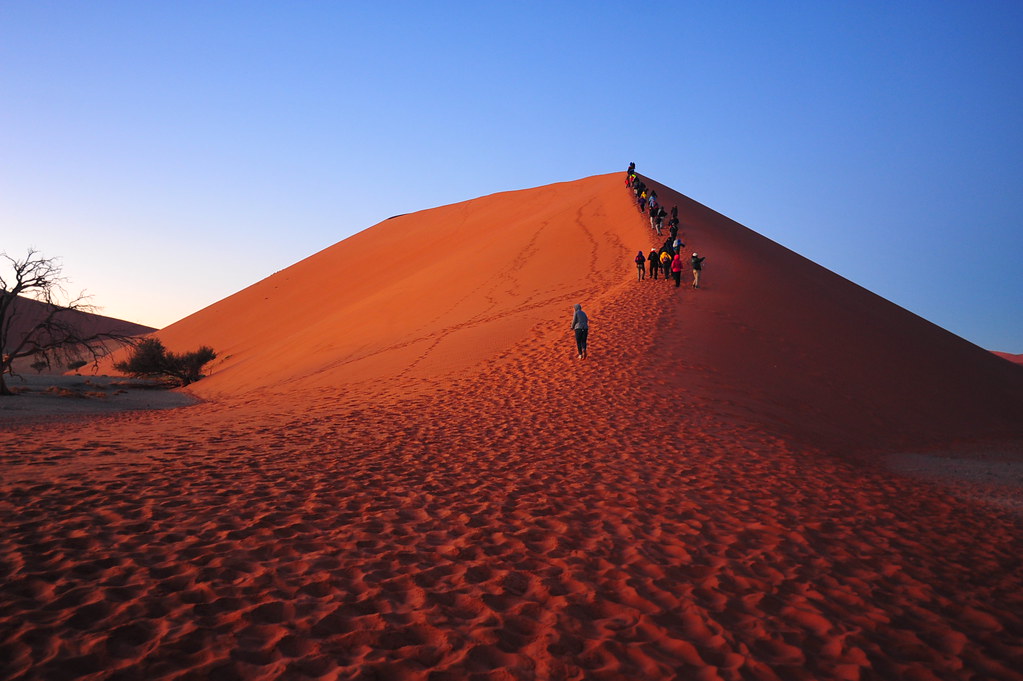
It’ll take an average fit person about 10 minutes to reach the top, where you’ll be rewarded by saying you saw the sun rise over the oldest desert in the world:
Try walking past the crowds and perhaps even farther along the ridge of Dune 45 can so you can spend a few quiet moments here alone. You deserve it.
After about 45 minutes here, we headed back down and enjoyed a brief simple breakfast at the base of the dune.
At 8:30am, we wrapped up and drove about 15 minutes (the ride gets very bouncy here!) more inland. We then hiked about 10 minutes over relatively flat and sandy terrain towards Dead Vlei.
Under the shadow of a dune called Big Daddy (the highest of them all at 325m high), Dead Vlei is a prehistoric clay pan that once was an oasis filled with acacia trees.
After the river that supplied the oasis changed its direction, killing both the oasis and its trees, the lack of moisture in this region caused the trees to petrify (aka “mummify”) instead of rotting away.
And they still stand today; when placed against the shiny white floor of the oasis pan and the “orange skies” that are the dunes, they create a surreal landscape that has been featured in countless movies and shows (namely “The Fall”, “The Cell” as my favorites) and probably is unmatched by anywhere else on this planet.
And remember that National Geographic photograph by Frans Lanting in 2011? It always has been one of my favorites and I’ve tried to recreate his work here:
…But I went a step further…
…as you can tell, it’s hard for me to choose a favorite…
…after all, I spent my entire traveling life trying to get to this place…
And after lingering here under the blistering heat for nearly an hour, we started to answer the natural call to turn around and head back home. Such a shame.
As it would be another 6 hour drive back to the capital city of Windhoek, please take your time here while you can; this is a true once-in-a-lifetime experience.
What more can I say? This is probably one of the most beautiful places I have ever laid my eyes on.
Enjoy the videos and photos; it’s time to go home.
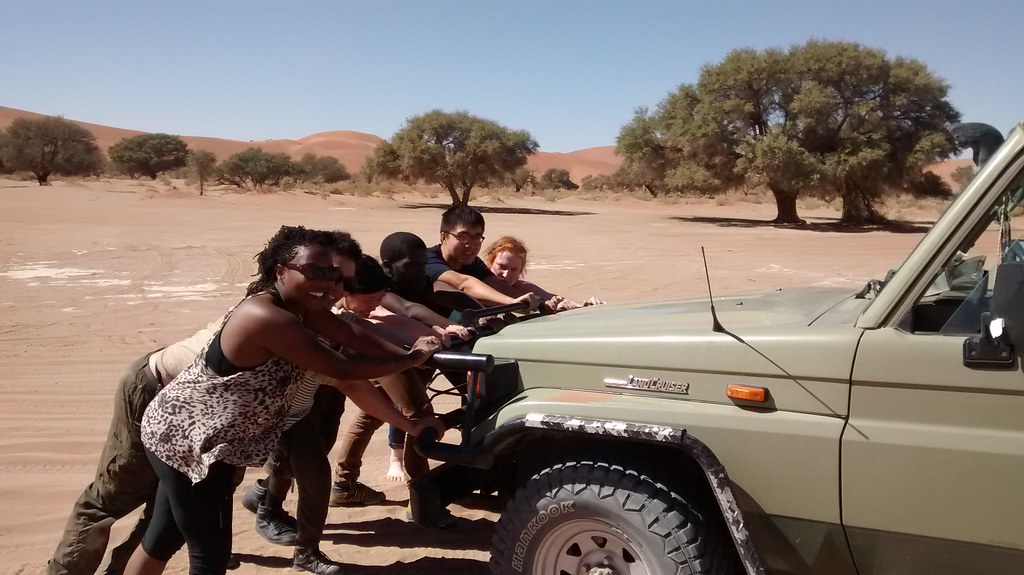
![]()

